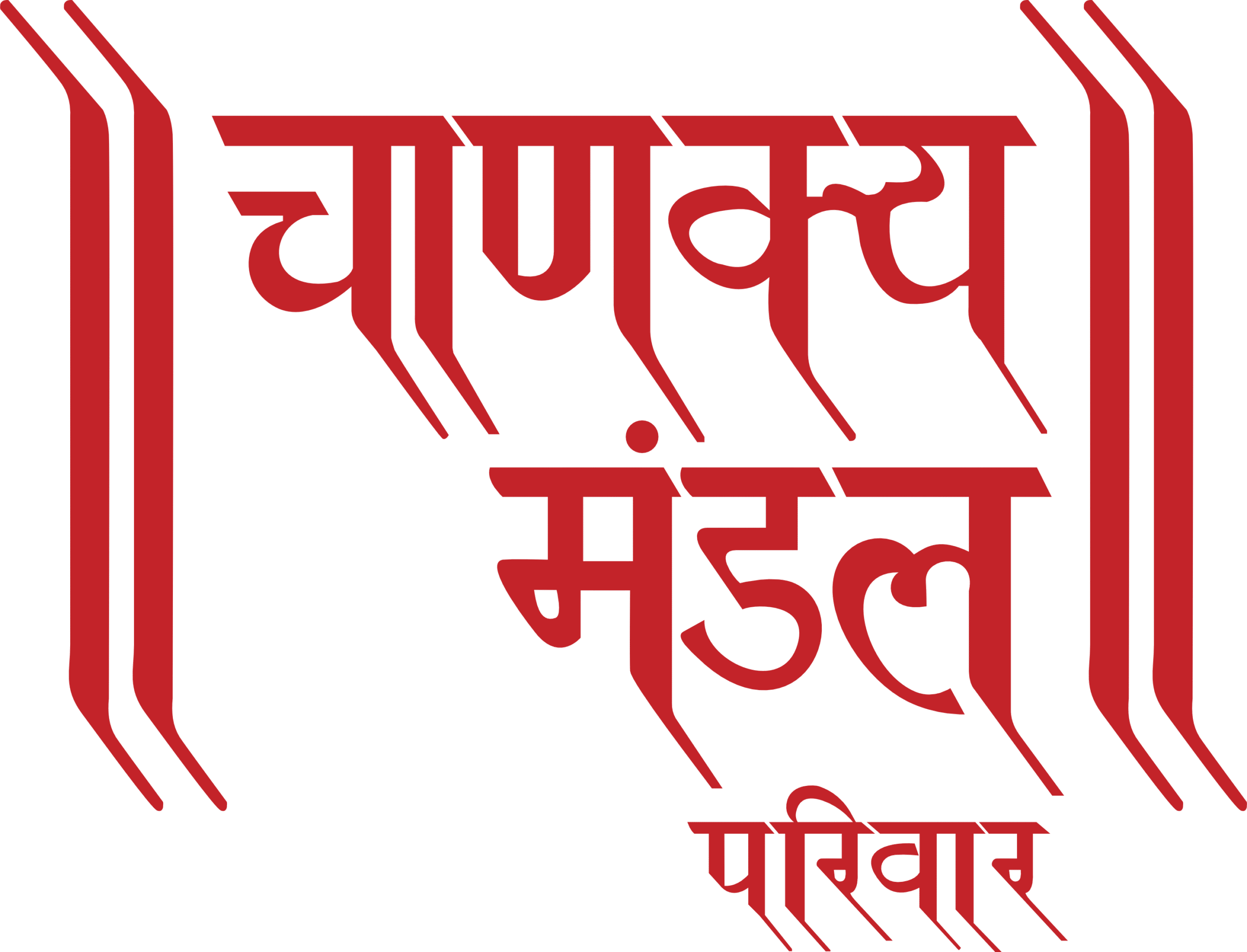Please fill this form. Our team will call you soon
Read Moreसमाजशास्त्र / SOCIOLOGY
प्रश्न–पत्र II / Paper II
निर्धारित समय : तीन घंटे अधिकतम अंक : 250
Time Allowed: Three Hours Maximum Marks: 250
प्रश्न–पत्र सम्बन्धी विशेष अनुदेश
कृपया प्रश्नों के उत्तर देने से पूर्व निम्नलिखित प्रत्येक अनुदेश को ध्यानपूर्वक पढ़ें :
इसमें आठ प्रश्न हैं जो दो खण्डों में विभाजित हैं तथा हिन्दी और अंग्रेज़ी दोनों में छपे हुए हैं।
परीक्षार्थी को कुल पाँच प्रश्नों के उत्तर देने हैं।
प्रश्न संख्या 1 और 5 अनिवार्य हैं तथा बाकी प्रश्नों में से प्रत्येक खण्ड से कम–से–कम एक प्रश्न चुनकर किन्हीं तीन प्रश्नों के उत्तर दीजिए ।
प्रत्येक प्रश्न/भाग के अंक उसके सामने दिए गए हैं।
प्रश्नों के उत्तर उसी प्राधिकृत माध्यम में लिखे जाने चाहिए जिसका उल्लेख आपके प्रवेश– – पत्र में किया गया है, और इस माध्यम का स्पष्ट उल्लेख प्रश्न –सह– उत्तर (क्यू.सी.ए.) पुस्तिका के मुख–पृष्ठ पर निर्दिष्ट स्थान पर किया जाना चाहिए । प्राधिकृत माध्यम के अतिरिक्त अन्य किसी माध्यम में लिखे गए उत्तर पर कोई अंक नहीं मिलेंगे।
प्रश्नों में शब्द सीमा, जहां विनिर्दिष्ट है, का अनुसरण किया जाना चाहिए। प्रश्नों के उत्तरों की गणना क्रमानुसार की जाएगी। यदि काटा नहीं हो, तो प्रश्न के उत्तर की गणना की जाएगी चाहे वह उत्तर अंशत: दिया गया हो । प्रश्न–सह– उत्तर पुस्तिका में खाली छोड़ा हुआ पृष्ठ या उसके अंश को स्पष्ट रूप से काटा जाना चाहिए ।
Question Paper Specific Instructions
Please read each of the following instructions carefully before attempting questions:
There are EIGHT questions divided in TWO SECTIONS and printed both in HINDI and in ENGLISH.
Candidate has to attempt FIVE questions in all
Questions no. 1 and 5 are compulsory and out of the remaining, any THREE are to be attempted choosing at least ONE question from each section.
The number of marks carried by a question/part is indicated against it.
Answers must be written in the medium authorized in the Admission Certificate which must be stated clearly on the cover of this Question-cum-Answer (QCA) Booklet in the space provided. No marks will be given for answers written in a medium other than the authorized one. Word limit in questions, wherever specified, should be adhered to.
Attempts of questions shall be counted in sequential order. Unless struck off, attempt of a question shall be counted even if attempted partly. Any page or portion of the page left blank in the Question-cum-Answer Booklet must be clearly struck off.
खण्ड A
SECTION A
Q1. निम्नलिखित में से प्रत्येक प्रश्न का, समाजशास्त्रीय दृष्टिकोण से, संक्षिप्त उत्तर लगभग 150 शब्दों में लिखिए:
Write short answers, with a sociological perspective, on the following questions in about 150 words each : 10×5=50
ए. आर. देसाई के भारतीय समाज अध्ययन के ‘द्वन्द्वात्मक परिप्रेक्ष्य की महत्त्वपूर्ण विशेषताओं को उजागर कीजिए ।
Highlight the significant features of A.R. Desai’s ‘Dialectical Perspective’ to study Indian Society. 10
(b) ” 1950 का दशक भारतीय समाजशास्त्र में ग्रामीण अध्ययन का स्वर्णिम युग था ।” इस कथन की व्याख्या कीजिए।
“The decade of 1950s was the golden period of village studies in Indian Sociology.” Explain the statement.
(c) जाति व्यवस्था के अध्ययन के गुणारोपणात्मक एवं अंतःक्रियात्मक दृष्टिकोणों के बीच के अंतर का विश्लेषण कीजिए ।
Analyse the differences between the attributional and interactional approach in studying the caste system. 10
(d) क्या परंपरा और आधुनिकता एक दूसरे के विरोधी हैं ? टिप्पणी कीजिए ।
Are Tradition and Modernity antithetical to each other? Comment.
(e)स्वतंत्रता प्राप्ति के बाद भारत में भूमि सुधारों की मुख्य विशेषताओं की चर्चा कीजिए ।
Discuss the main features of Land Reforms in post-independence India. 10
Q2. (a)
(a) क्या आप आंद्रे बेतेई के इस विचार से सहमत हैं कि भारत के गाँव, भारतीय समाज के मूल सभ्यतागत मूल्यों के प्रतीक हैं ? एक समाजशास्त्रीय अवलोकन प्रस्तुत कीजिए ।
Do you agree with the view of Andre Beteille that India’s villages are representative of Indian society’s basic civilizational values? Present a sociological overview. 20
(b) भारत के लोकतंत्र और विकास में मध्य वर्ग की प्रमुख विशेषताओं और भूमिका को सविस्तार समझाइए । 20
Elaborate the salient features and the role of middle class in India’s democracy and development.
(c) भारत में विवाह व्यवस्था की बदलती प्रवृत्तियों को समझने में बाज़ार एवं आधुनिक शक्तियों की भूमिका का विश्लेषण कीजिए ।
Analyse the role of market and modern forces in understanding the changing trends in marriage systems in India. 10
Q3.
(a) भारत में जाति व्यवस्था के संदर्भ में लूई ड्यूमॉन्ट के ‘द्विआधारी विरोध‘ की अवधारणा की प्रासंगिकता स्पष्ट कीजिए ।
Contextualize Louis Dumont’s concept of ‘binary opposition’ with reference to caste system in India. 20
(b) ‘वंशानुक्रम‘ एवं ‘गठबंधन‘ की अवधारणाओं को परिभाषित कीजिए। उत्तर एवं दक्षिण भारत की नातेदारी व्यवस्थाओं के बीच के अंतर को उदाहरणों सहित स्पष्ट कीजिए ।
Define the concepts of Descent’ and ‘Alliance’. Differentiate between North Indian and South Indian Kinship systems with examples. 20
(c) संस्कृतीकरण की अवधारणा का उपयुक्त उदाहरणों के साथ आलोचनात्मक परीक्षण कीजिए ।
Critically examine the concept of Sanskritization with suitable illustrations. 10
Q4. (a) भारतीय जनजातीय समाज के विकास की विभिन्न धाराओं को समझने में अलगाव, समावेशन और एकीकरण के परिप्रेक्ष्यों का विश्लेषण कीजिए ।
Analyse the perspectives of Isolation, Assimilation and Integration in understanding the trajectories of Indian Tribal Development. 20
(b) भारत में बदलती कृषि वर्ग संरचना की स्थिति में भूमंडलीकरण के निहितार्थ और प्रभावी व्याख्या कीजिए ।
Explain the implications and the impact of globalization in situating the changing agrarian class structure in India. 20
(c) भारतीय समाज के संदर्भ में हरित क्रांति की विजय गाथा की आलोचनात्मक समीक्षा कीजिए ।
Critique the victory narratives of Green Revolution in the context of Indian society. 10
खण्ड B
SECTION B
Q5. निम्नलिखित में से प्रत्येक प्रश्न का, समाजशास्त्रीय दृष्टिकोण से, संक्षिप्त उत्तर लगभग 150 शब्दों में लिखिए:
Write short answers, with a sociological perspective, on the following questions in about 150 words each : 10×5=50
(a) कुछ केस अध्ययन पद्धतियों को का विस्तार कीजिए । उद्धत करते हुए, ‘विकास– प्रेरित विस्थापन‘ की अवधारणा
Citing some case studies, expand the concept of Development-induced Displacement’.
(b) ‘सांस्कृतिक बहुलवाद‘ की अवधारणा का भारत की अनेकता में एकता के संदर्भ में परीक्षण कीजिए ।
Examine the concept of ‘Cultural Pluralism’ in the context of India’s Unity in Diversity.
(c) नई शिक्षा नीति 2020 (NEP 2020 ) की मुख्य विशेषताओं पर प्रकाश डालिए । Highlight the salient features of the New Education Policy (NEP) 2020.
(d) भारत में सोशल मीडिया और जन लामबंदी ( जुटाव ) के बीच के समाजशास्त्रीय अंतर्संबंधों का विश्लेषण कीजिए ।
Analyse the sociological interconnections between Social Media and Mass Mobilization in India.
(e) भारत में लिंगानुपात के क्षेत्रीय उतार–चढ़ाव की प्रकृति और उसके कारणों का उल्लेख करते हुए विवेचना कीजिए ।
Discuss the nature of regional variations in sex ratio in India, stating reasons thereof.
Q6. (a) आप भारत में धर्मनिरपेक्षता के सिद्धांत के संदर्भ में सार्वजनिक एवं व्यक्तिगत क्षेत्रों में धर्म के बढ़ते महत्त्व को कैसे देखते हैं ? व्याख्या कीजिए । 20
How do you account for the increasing significance of religion in public and personal spheres in the context of secularization thesis in India?Explain.
- b) बढ़ती वैश्विक जलवायु संबंधी चिंताओं के सामने, आप चिपको आंदोलन और इसके गाँधीवादी स्वर की प्रासंगिकता को किस प्रकार संदर्भीकृत करते हैं ? विश्लेषणात्मक उत्तर दीजिए ।
In the face of rising global climatic concerns, how do you contextualize the relevance of Chipko Movement and its Gandhian tone? Answer analytically. 20
(c) भारत में बाल–श्रम के आवर्ती ख़तरे को नियंत्रित करने के लिए आप किन कार्रवाई– योग्य उपायों का सुझाव देंगे ?
What actionable measures would you suggest to curb the recurrent child labour menace in India? 10
Q7. (a) क्या आपको लगता है कि दशकों के दलित राजनीतिक लामबंदियों और आंदोलनों से भारतीय लोकतंत्र की जड़ें मज़बूत हुई हैं ? अपने तर्क तथ्यों के साथ प्रस्तुत कीजिए ।
Do you think that the decades of Dalit political mobilizations and movements have helped in strengthening India’s democracy? Substantiate your arguments with facts. 20
(b) ‘प्रतिवर्ती प्रवास‘ (रिवर्स माइग्रेशन) क्या है ? भारत में इसकी विशेषताओं, कारणों एवं परिणामों पर चर्चा कीजिए । What is ‘reverse migration’? Discuss its features, causes and consequences in India. 20
(c) ग्रामीण शहरी सातत्य की परिघटना की उपयुक्त उदाहरणों के साथ चर्चा कीजिए ।
Discuss the phenomenon of rural-urban continuum with suitable examples. 10
Q8. (a) कुछ हालिया मामलों का हवाला देते हुए भारत में ‘पितृसत्ता‘ और ‘सम्मान रक्षा हेतु हत्या‘ ( ऑनर किलिंग) के बीच विषयगत संबंधों की व्याख्या कीजिए । 20
Explain the thematic linkages between ‘Patriarchy’ and ‘Honour killing’ in India, citing some recent cases.
(b) भारत में सहकारी आंदोलनों के सामने आने वाली चुनौतियों की चर्चा कीजिए । जमीनी स्तर पर इस आंदोलन को मज़बूत करने के उपाय सुझाइए ।
Discuss the challenges faced by the cooperative movements in India. Suggest measures to strengthen the movement at the grass-roots level. 20
(c) ‘वयोवृद्धि‘ से क्या अभिप्राय है ? भारत में वृद्ध लोगों की मुख्य समस्याओं की चर्चा कीजिए ।
What is ‘Ageing’? Discuss the major problems of aged people in India. 10
 CTS
CTS  Donate
Donate 
